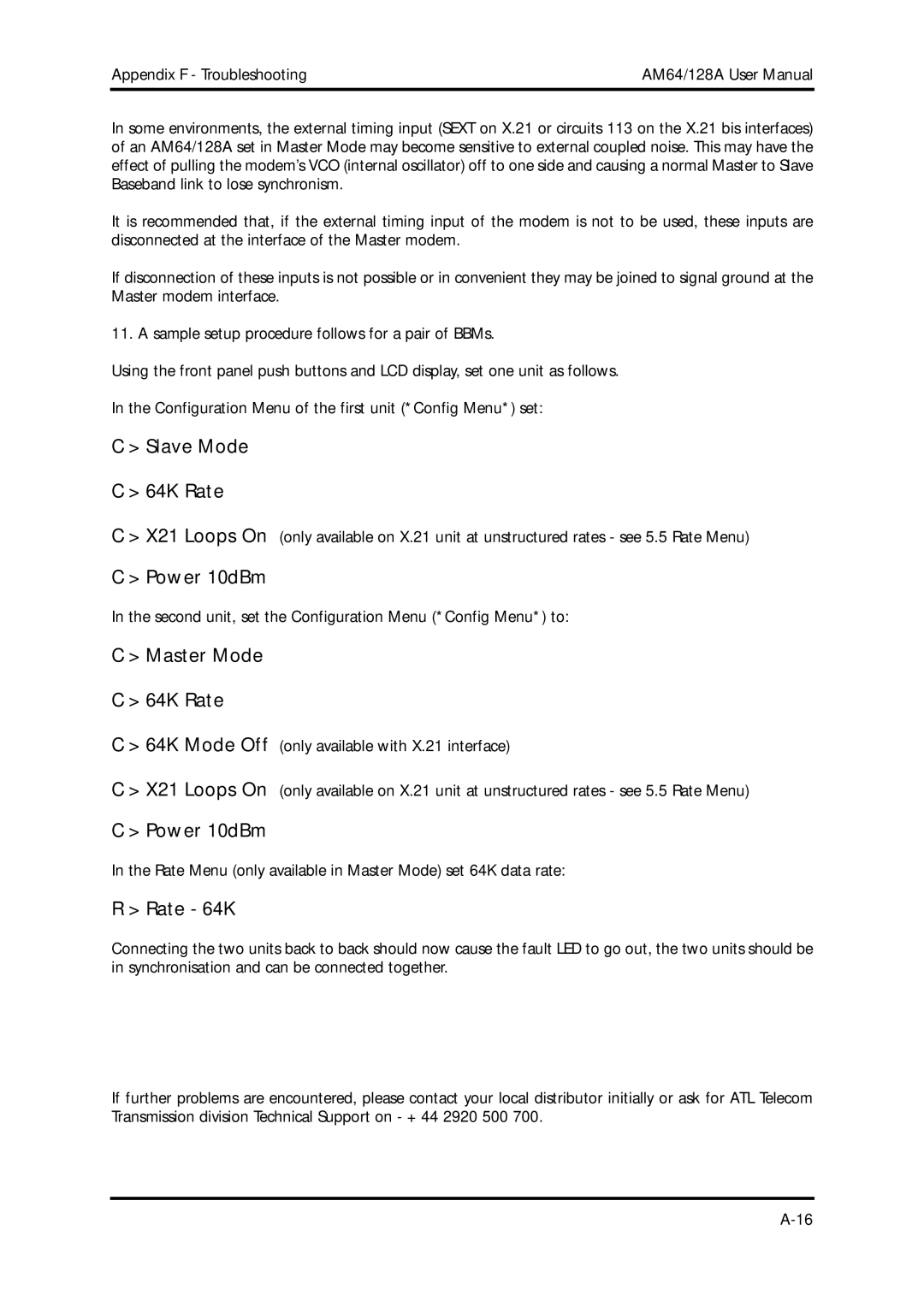Appendix F - Troubleshooting | AM64/128A User Manual |
|
|
In some environments, the external timing input (SEXT on X.21 or circuits 113 on the X.21 bis interfaces) of an AM64/128A set in Master Mode may become sensitive to external coupled noise. This may have the effect of pulling the modem’s VCO (internal oscillator) off to one side and causing a normal Master to Slave Baseband link to lose synchronism.
It is recommended that, if the external timing input of the modem is not to be used, these inputs are disconnected at the interface of the Master modem.
If disconnection of these inputs is not possible or in convenient they may be joined to signal ground at the Master modem interface.
11. A sample setup procedure follows for a pair of BBMs.
Using the front panel push buttons and LCD display, set one unit as follows.
In the Configuration Menu of the first unit (*Config Menu*) set:
C > Slave Mode
C > 64K Rate
C > X21 Loops On (only available on X.21 unit at unstructured rates - see 5.5 Rate Menu)
C > Power 10dBm
In the second unit, set the Configuration Menu (*Config Menu*) to:
C > Master Mode C > 64K Rate
C > 64K Mode Off C > X21 Loops On C > Power 10dBm
(only available with X.21 interface)
(only available on X.21 unit at unstructured rates - see 5.5 Rate Menu)
In the Rate Menu (only available in Master Mode) set 64K data rate:
R > Rate - 64K
Connecting the two units back to back should now cause the fault LED to go out, the two units should be in synchronisation and can be connected together.
If further problems are encountered, please contact your local distributor initially or ask for ATL Telecom Transmission division Technical Support on - + 44 2920 500 700.
